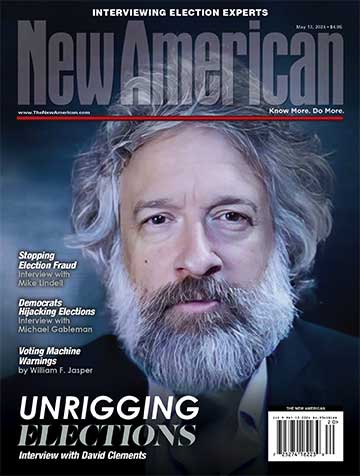
President Obama proposed Thursday making two years of community college free for all students. Although his plan does not have an official cost established yet, White House officials estimate that the price tag for taxpayers will be “significant.”
In order to qualify under Obama’s plan, students at any age must have at least a C+ average and attend school at least half-time and be considered to be making “steady progress” toward their degrees.
The president is proposing that federal funding cover three-quarters of the cost and that the states pay the rest. Of course, there is no authorization in the Constitution for the federal government to fund community college education. But there is also no constitutional authorization for the federal government to fund elementary or secondary education and this has not stopped the federal government from doing it.
If all 50 states were to participate, the proposal would impact approximately nine million students, saving each of them an average of $3,800 in tuition costs. That would bring the cost to somewhere around $34 billion per year.
The president’s announcement was made in a video he released Thursday evening, in which he stated,
What I’d like to do is to see the first two years of community college free for everybody who’s willing to work for it. It’s something we can accomplish, and it’s something that will train our workforce so that we can compete with anybody in the world.
I hope we’ve got the chance to make sure that Congress gets behind these kinds of efforts to make sure that even as we rebound and grow in 2015, that it benefits everybody and not just some.
But even with the astronomical costs of such a proposal, administration officials insist that it has bipartisan support.
In fact, it was Republican Governor Bill Haslam’s Tennessee Promise program that reportedly influenced Obama’s proposal. Under Haslam’s plan, any high school graduate in the state is eligible for two years of free community college tuition.
Obama used his Friday appearance in Knoxville, Tennessee, to pitch his idea.
“Community colleges should be free for those willing to work for it,” he told a crowd at Pellissippi State Community College. “It’s not a blank check, not a free lunch, but for those willing to do the work…it can be a game changer.”
Administration officials may be getting ahead of themselves in claiming bipartisan support, however. A spokesman for House Speaker John Boehner said, “With no details or information on the costs, this seems more like a talking point than a plan.”
A number of critics have voiced concerns with the proposal.
The Institute for College Access and Success called it a “wolf in sheep’s clothing,” noting that the more expensive costs of college — living expenses, textbooks, and transportation — are not covered by the plan.
And Politico reports,
Bryce McKibben, a former Association of Community College Trustees policy analyst who recently became a policy adviser to Democrats on the Senate education committee, has noted potential flaws. For instance, the program could end up doing more for less needy students than those who need it the most, because low-income applicants may already be covered by Pell grants and other federal aid.
Other critics, however, note the impact that such a proposal would have on higher education as a whole. The Cato Institute writes,
Even with its problems, the American postsecondary education system is considered to be the best in the world. Driven by freedom of choice by consumers and competition between independent institutions, it has unmatched vibrancy. However, increasing top-down control and subsidization from Washington is creating a threat to the strength of the American system.
As we have seen in K-12 education, the growth in federal subsidies is usually accompanied by calls for more oversight, micromanagement, and rising levels of red tape imposed by Washington.
One simply needs to look at the eligibility requirements for community colleges to qualify for this program to see how true this is. Politico reports that in order to participate, community colleges would have to offer academic programs that fully transfer credits to public four-year colleges and universities that maintain high graduation rates leading to in-demand degrees and certificates. Those colleges would also need to adopt “promising and evidence-based institutional reforms” in order to improve student outcomes.
Additionally, the CATO Institute points out another problem related to federal investment in higher education:
For one thing, such subsidies benefit people who will earn higher than average incomes during their careers. Thus, the effect of subsidy programs, in part, is to impose taxes on blue collar workers, who have not attended college, to pay for the tuition of future white-collar professionals. Why should the government subsidize future high earners at the expense of average working people?
Likewise, federal subsidies have historically served to increase education costs. Peter Wood, a professor at Boston University, noted that federal subsidies “are seen by colleges and universities as money that is there for the taking … tuition is set high enough to capture those funds and whatever else we think can be extracted from parents.”
Perhaps that is why a number of community colleges have embraced the proposal.
Thomas Snyder, president of Ivy Tech Community College in Indiana, fully supports the idea, which he called “a game-changer.”
“We have ground to make up against other countries, and this is a big first step in doing just that,” Snyder declared. “It will make the goal of achieving a college degree more attainable for more Americans — whether it be a two-year degree that leads to a good-paying job or the first step toward a more affordable four-year option.”
But as noted by the CATO Institute, does increased college enrollment necessarily mean success? The organization writes that despite such an increase over the last few decades, there has been a decline in aptitude:
Many of those additional students may not have been ready, or suited, for college. As evidenced by the rising shares of college students who require remedial work. Further evidence of the problem is that institutions have lowered their standards to adapt to the rise in second-rate students. The American Academy of Arts and Sciences reported that from the mid-1960s to the mid-1990s, college grade point averages grew steadily but Scholastic Aptitude Test scores declined. The share of entering college students who complete degrees has also fallen over the decades.
ABC News notes that Obama’s plan to increase enrollment in community colleges is hampered by capacity limitations. “The nation currently only has 1,100 community colleges. Some states that have individually dabbled in subsidized or free community college programs have seen their systems overwhelmed.”
Whether there is any real chance for Obama’s proposal to pass remains to be seen. His domestic policy adviser Cecilia Muñoz told reporters that his goal is simply to “start a conversation.”




